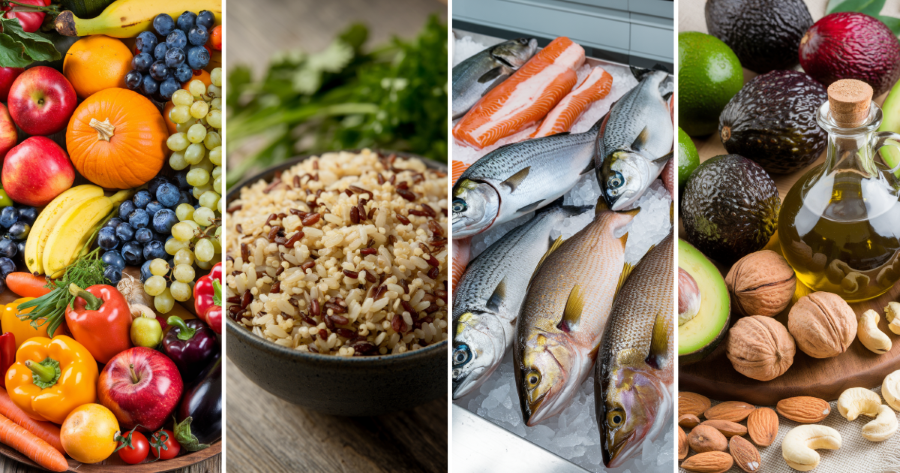Wholesome foods are nutritious and minimally processed options that promote health and well-being. These foods include fruits, vegetables, whole grains, lean proteins, and healthy fats. By choosing wholesome foods, you can fuel your body with essential nutrients and support your overall health.
Eating wholesome foods can improve your energy levels, boost your immune system, and help maintain a healthy weight. When you focus on eating unprocessed or minimally processed foods, you reduce your intake of added sugars, unhealthy fats, and artificial ingredients. This can lead to better digestion, clearer skin, and improved mental clarity.
Creating a wholesome meal plan is easier than you might think. Start by filling your plate with colorful fruits and vegetables, adding whole grains like brown rice or quinoa, and choosing lean proteins such as fish or beans. You can also include healthy fats from sources like avocados, nuts, and olive oil. By making these simple changes, you'll be on your way to a more nutritious and satisfying diet.
Understanding Wholesome Foods
Wholesome foods are natural, nutrient-rich items that support your health. They provide essential vitamins, minerals, and other beneficial compounds your body needs to thrive.
Defining Wholesome
Wholesome foods are minimally processed and close to their natural state. These include fruits, vegetables, whole grains, nuts, seeds, and lean proteins. Wholesome foods don't have added sugars, artificial ingredients, or preservatives.
Fresh produce like apples, spinach, and carrots are great examples. Whole grains like brown rice and quinoa also fit the bill. Lean meats, fish, eggs, and beans are wholesome protein sources.
Look for foods with short, simple ingredient lists. The fewer ingredients, the better. Avoid items with words you can't pronounce or don't recognize.
Benefits of Wholesome Foods
Eating wholesome foods can boost your health in many ways. They're packed with nutrients that help your body work its best.
Wholesome foods give you:
- More energy
- Better digestion
- Stronger immune system
- Healthier skin and hair
- Lower risk of chronic diseases
The fiber in fruits, veggies, and whole grains keeps you full and aids digestion. Antioxidants fight harmful free radicals in your body. Vitamins and minerals support various body functions.
Wholesome foods can help you maintain a healthy weight. They're often lower in calories but more filling than processed options.
Essential Food Groups
A balanced diet includes key food groups that provide vital nutrients for your body. These groups form the foundation of wholesome eating habits and support overall health and well-being.
Proteins and Lean Meats
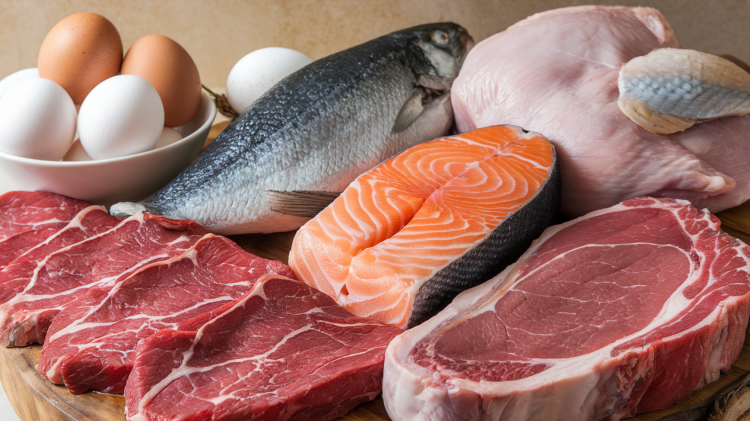
Proteins are crucial for building and repairing tissues. Choose lean meats, fish, eggs, and plant-based options like beans and lentils. Aim for 2-3 servings daily.
Lean meats like chicken and turkey are great protein sources. Fish offers omega-3 fatty acids, which are good for heart health. Plant-based proteins like tofu and tempeh are perfect for vegetarians and vegans.
Try to include a protein source in each meal. This helps you feel full and keeps your energy levels stable throughout the day.
Fruits and Vegetables
Fruits and vegetables are packed with vitamins, minerals, and fiber. Eat a rainbow of colors to get a wide range of nutrients. Try to fill half your plate with fruits and veggies at each meal.
Berries, citrus fruits, and leafy greens are nutrient powerhouses. Carrots, sweet potatoes, and bell peppers offer beta-carotene for eye health. Cruciferous veggies like broccoli and cauliflower have cancer-fighting compounds.
Fresh, frozen, or canned fruits and veggies all count. Just watch out for added sugars or salt in canned options.
Whole Grains and Fibers
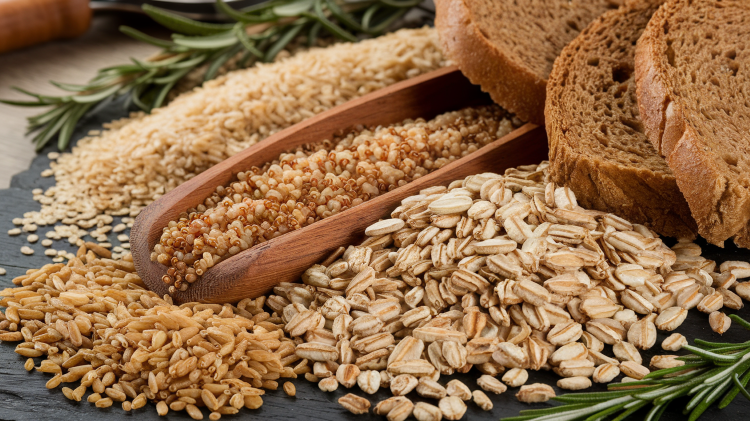
Whole grains provide energy, fiber, and B vitamins. Choose brown rice, quinoa, oats, and whole wheat bread over refined grains. Aim for 3-5 servings per day.
Fiber aids digestion and helps you feel full. It also supports heart health by lowering cholesterol. Whole grain pasta, barley, and bulgur are great options to add to your meals.
Try swapping white rice for brown rice or using whole wheat flour in baking. These small changes can boost your fiber intake significantly.
Dairy and Dairy Alternatives
Dairy products offer calcium and vitamin D for strong bones. If you can't have dairy, choose fortified plant-based alternatives. Aim for 2-3 servings daily.
Milk, yogurt, and cheese are common dairy options. For plant-based alternatives, try soy milk, almond milk, or oat milk fortified with calcium and vitamin D.
Greek yogurt is high in protein and makes a great snack. Cottage cheese is another protein-rich dairy option that's versatile in both sweet and savory dishes.
Wholesome Meal Planning
Meal planning helps you eat healthier and save time and money. It lets you choose nutritious foods and avoid unhealthy options. Let's look at how to create balanced meals, pick wholesome snacks, and use meal prep and delivery services.
Creating Balanced Meals
Start by planning your main meals - breakfast, lunch, and dinner. Aim for a mix of protein, carbs, and healthy fats at each meal. For breakfast, try oatmeal with fruit and nuts. Lunch could be a salad with grilled chicken and avocado.
For dinner, have fish with roasted veggies and quinoa. Use a plate model: half veggies, quarter protein, quarter whole grains. This helps you get the right balance of nutrients.
Make a weekly meal plan. Write down ideas for each day. Check your schedule and plan quick meals for busy days. Having a plan helps you stay on track with healthy eating.
Wholesome Snack Ideas

Snacks can be part of a healthy diet. They help keep your energy up between meals. Good snacks have protein and fiber to keep you full. Some ideas are apple slices with peanut butter or carrots with hummus.
Greek yogurt with berries is another great choice. It has protein and healthy carbs. For a salty snack, try air-popped popcorn or a small handful of nuts.
Keep pre-cut veggies in the fridge for easy snacking. Hard-boiled eggs are good to have on hand, too. When you're out, pack snacks like trail mix or whole fruit to avoid unhealthy options.
Meal Prep and Home Delivery
Meal prep can save you time during the week. Set aside a few hours on the weekend to cook. Make big batches of foods like grilled chicken, roasted veggies, and brown rice. Store them in containers in the fridge or freezer.
You can also chop veggies and make sauces ahead of time. This makes it easy to throw together quick meals. Some people like to fully prep meals for the whole week.
If you're short on time, meal delivery services can help. Many offer healthy, pre-made meals. You can choose plans that fit your diet needs. Some deliver ingredients for you to cook at home. This can be a good way to learn new recipes.
Nutrition-Specific Diets
Certain eating patterns focus on specific nutritional goals. These diets can help you meet health targets or align with personal values.
Plant-Based Diets
Plant-based diets center on foods from plants. You eat mostly fruits, vegetables, grains, nuts, and seeds. Some versions allow small amounts of animal products. Others exclude them totally.
Benefits of plant-based eating include:
- Lower risk of heart disease
- Better blood sugar control
- Weight management
- Reduced environmental impact
To get enough protein, eat beans, lentils, tofu, and quinoa. Add leafy greens like spinach and kale for iron. Consider a B12 supplement if you cut out all animal foods.
Plant-based meals can be simple. Try a veggie stir-fry with brown rice. Or make a hearty lentil soup packed with veggies.
Protein-Rich Diets
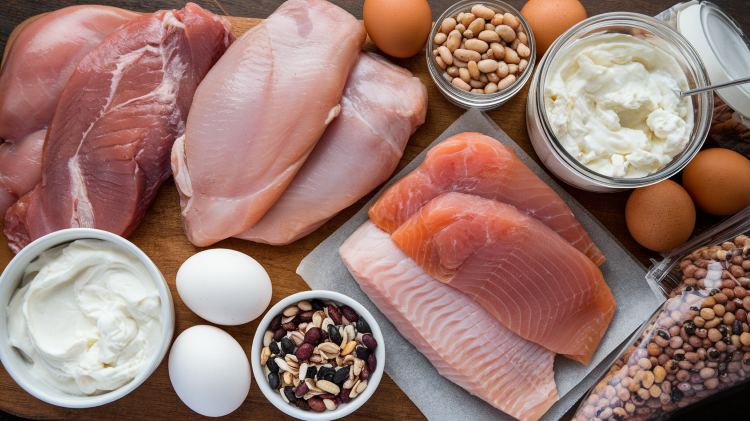
Protein-rich diets aim to boost protein intake. This can help build muscle, aid weight loss, and keep you full.
Good protein sources include:
- Lean meats (chicken, turkey, fish)
- Eggs
- Greek yogurt
- Cottage cheese
- Beans and lentils
- Nuts and seeds
Aim for protein at each meal. Add Greek yogurt to breakfast. Have a chicken salad for lunch. Snack on nuts or hard-boiled eggs.
Watch portion sizes of high-fat protein foods. Choose lean options when you can. Balance your plate with veggies and whole grains.
Minimally Processed Foods
Minimally processed foods are close to their natural state. They lack added sugars, preservatives, and artificial ingredients.
Examples include:
- Fresh fruits and vegetables
- Whole grains like brown rice and oats
- Raw nuts and seeds
- Fresh meat and fish
These foods are rich in nutrients. They can help you feel full and maintain a healthy weight.
To eat more minimally processed foods:
- Shop the edges of the grocery store
- Read labels and choose items with few ingredients
- Cook meals at home using whole ingredients
Cooking for Health and Enjoyment
Cooking wholesome foods can be both nutritious and fun. You can use simple techniques and ingredients to make tasty meals that support your health goals.
Cooking Methods and Techniques
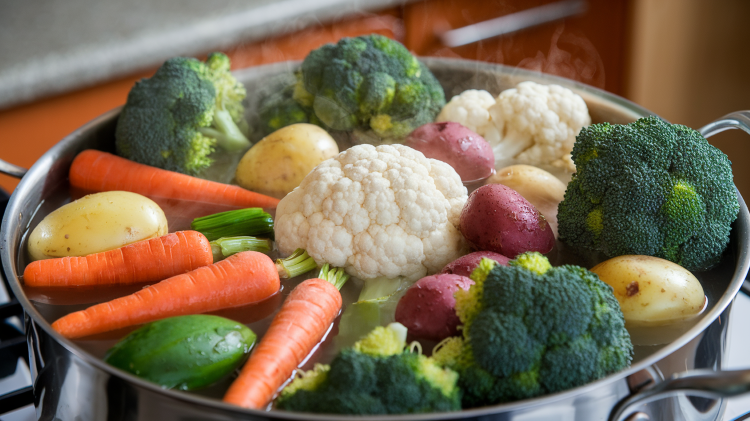
Try steaming veggies to keep their nutrients. It's quick and easy. You can also roast them in the oven for a crispy texture.
Grilling is great for meats and fish. It adds flavor without extra fat. Just watch out for charring, which can be unhealthy.
Slow cooking is perfect for busy days. Put ingredients in your slow cooker in the morning. You'll have a warm, healthy meal ready by dinner time.
Stir-frying is fast and uses little oil. It keeps veggies crisp and colorful. Use a non-stick pan to cut down on oil even more.
Healthy Baking Alternatives
Swap white flour for whole wheat or almond flour. They have more fiber and nutrients. You can also use mashed bananas or applesauce instead of oil in some recipes.
Try using Greek yogurt in place of sour cream. It's high in protein and low in fat. For eggs, ground flax seeds mixed with water work well in many recipes.
Replace sugar with natural sweeteners like honey or maple syrup. Use less than the recipe calls for to cut down on calories. Cinnamon and vanilla extract can add sweetness without extra sugar.
Savory Cooking with Wholesome Ingredients
Use herbs and spices to add flavor without salt. Garlic, ginger, and turmeric are tasty and good for you. Fresh herbs like basil and cilantro brighten up any dish.
Choose healthy fats like olive oil and avocado. They're better for your heart than saturated fats. Nuts and seeds add crunch and healthy fats to salads and stir-fries.
Try new whole grains like quinoa or barley. They're filling and full of fiber. Add them to soups or use them as a base for grain bowls.
Beans and lentils are cheap and packed with protein. Use them in tacos, soups, or salads. They're a great way to eat less meat if you want.
Wholesome Foods in the Market
Wholesome foods are becoming more widely available in restaurants and grocery stores. You can find nutritious options by knowing where to look and how to read labels.
Restaurants with Wholesome Menus

Many restaurants now offer wholesome meal choices. Look for places that use fresh, high-quality ingredients. Some restaurants list calorie counts and nutritional info on their menus. This helps you make smart choices.
Farm-to-table restaurants often have wholesome options. They use local, seasonal produce. This means fresher food with more nutrients.
Some chain restaurants have started adding healthier items, too. You might find grilled chicken, fish, or vegetable dishes. Ask about how foods are prepared. Choose items that are baked, grilled, or steamed instead of fried.
Grocery Shopping for Wholesome Foods
When shopping for wholesome foods, start in the produce section. Pick a variety of colorful fruits and veggies. Fresh is best, but frozen fruits and veggies are good, too. They're often frozen at peak ripeness.
For proteins, look for lean options. Good choices include:
- Chicken
- Turkey
- Fish
- Lean cuts of beef and pork
Check the seafood counter for fresh fish. Canned fish like tuna or salmon can be healthy and budget-friendly.
In the dairy section, pick low-fat milk, yogurt, and cheese. Look for whole grain bread, cereals, and pasta in the bakery and grain aisles.
Reading Labels and Nutrition Facts
Reading food labels helps you make wholesome choices. The nutrition facts panel shows key info about the food inside.
Look at serving sizes first. All the numbers on the label are based on one serving. Next, check calories per serving. This helps you manage your daily intake.
Pay attention to these nutrients:
- Fiber: Aim for foods high in fiber
- Protein: Important for building and repairing tissues
- Vitamins and minerals: Look for foods rich in these
- Sodium: Choose foods with less sodium
- Added sugars: Less is better
The ingredient list is also key. Ingredients are listed by weight. The first few are the main ones in the food. Look for short lists with words you can pronounce.
Lifestyle and Wholesome Eating Habits
Eating wholesome foods can greatly improve your daily life and health. It's not just about what you eat, but how you incorporate nutritious choices into your routine.
Incorporating Wholesome Foods into Daily Life
Start your day with a nutritious breakfast. Try oatmeal topped with nuts and seeds for healthy fats and protein. Pack wholesome snacks like fruit or veggie sticks for work or school.
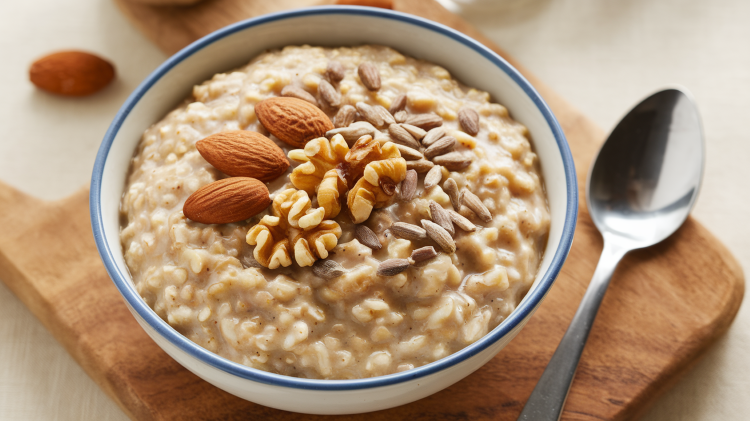
Plan your meals ahead of time. This helps you make better food choices and avoid unhealthy options. Try meal prepping on weekends to save time during busy weekdays.
Make small swaps in your diet. Replace white bread with whole grain or chips with air-popped popcorn. These little changes add up over time.
Cook more meals at home. This gives you control over ingredients and portion sizes. Invite friends or family to join you for wholesome dinners.
Impact on Overall Health and Wellness
Eating wholesome foods can boost your energy levels. You'll feel more alert and focused throughout the day. This can improve your work or school performance.
A nutritious diet supports your immune system. You may get sick less often and recover faster when you do. This means fewer missed days of work or school.
Wholesome eating habits can lower your risk of heart disease. Foods like nuts, seeds, and fatty fish provide heart-healthy fats. These help keep your arteries clear and your heart strong.
You might notice improvements in your skin and hair. Many wholesome foods are rich in vitamins that promote healthy skin and strong hair.
Educational Programs and Community Services
Look for cooking classes in your area. These can teach you how to prepare tasty, wholesome meals. Many community centers offer free or low-cost classes.
Check if your local grocery store has a dietitian. They often provide free tours to help you shop for wholesome foods. You can learn to read labels and choose healthier options.
Some schools now offer nutrition education. This helps kids learn about wholesome foods early on. Ask if your child's school has such programs.
Community gardens are great places to learn about fresh produce. You can grow your own vegetables and fruits. This makes eating wholesome foods more affordable and fun.
Conclusion
Wholesome foods offer many benefits for your health and well-being. By choosing natural, unprocessed options, you give your body the nutrients it needs to thrive.
Fruits, vegetables, whole grains, and lean proteins form the foundation of a wholesome diet. These foods provide essential vitamins, minerals, and fiber.
Making small changes can have a big impact. Try swapping refined grains for whole grains or adding an extra serving of vegetables to your meals.
Remember that balance is key. You don't need to completely overhaul your diet overnight. Start with small steps and build healthy habits over time.
Eating wholesome foods can help you feel more energized and satisfied. You may notice improvements in your mood, digestion, and overall health.
Consider meal planning to make wholesome eating easier. Stock your kitchen with nutritious ingredients for quick, healthy meals.
By focusing on wholesome foods, you're investing in your long-term health and well-being. Your body will thank you for nourishing it with real, nutrient-dense foods.


